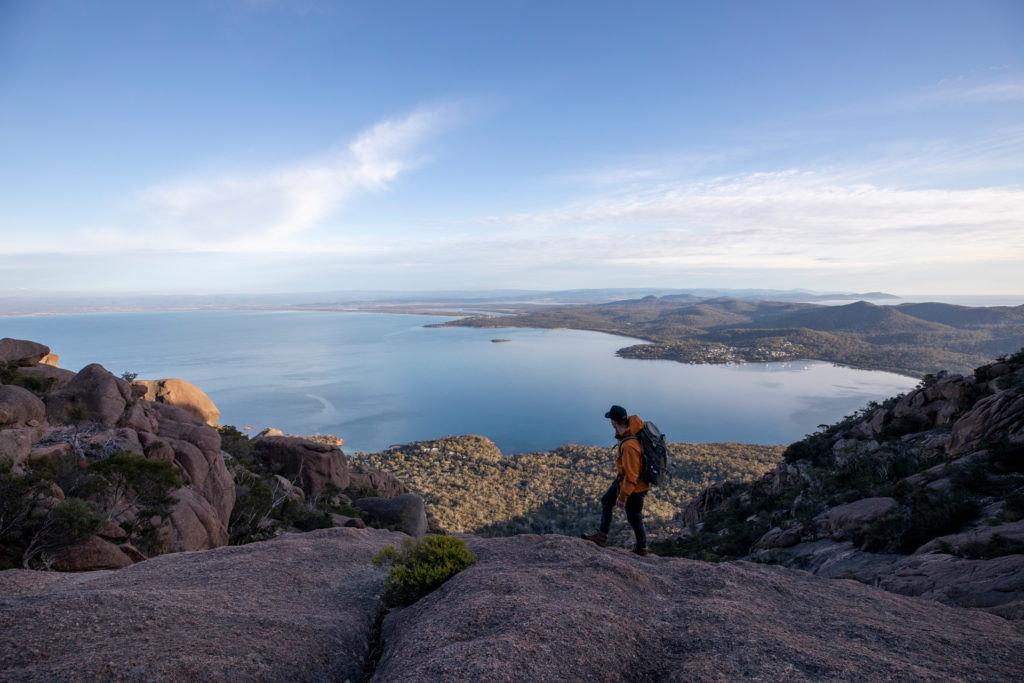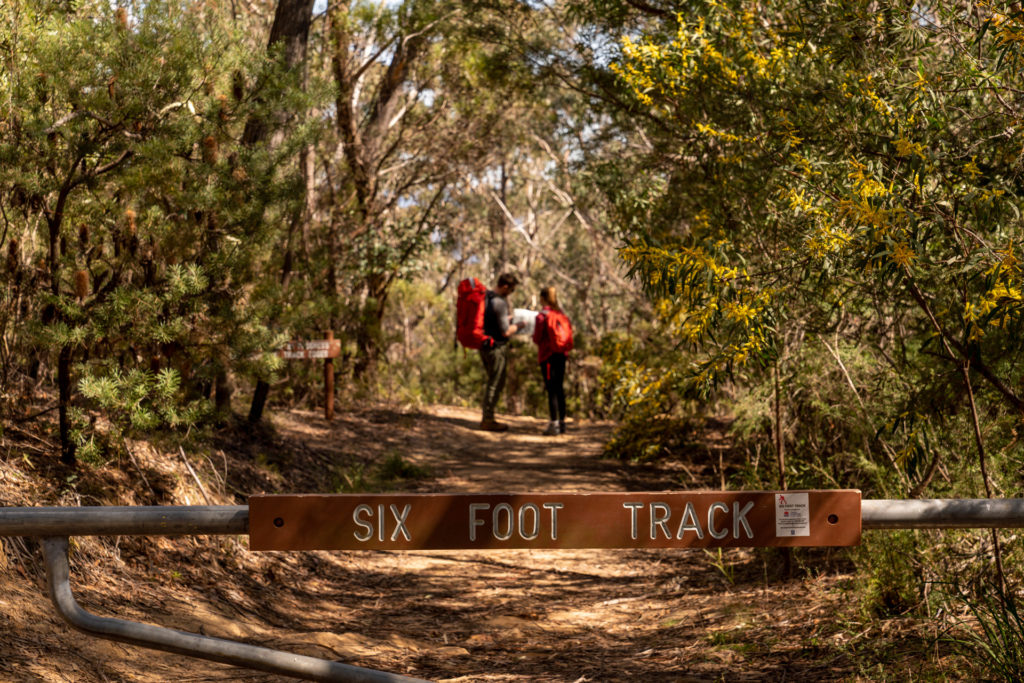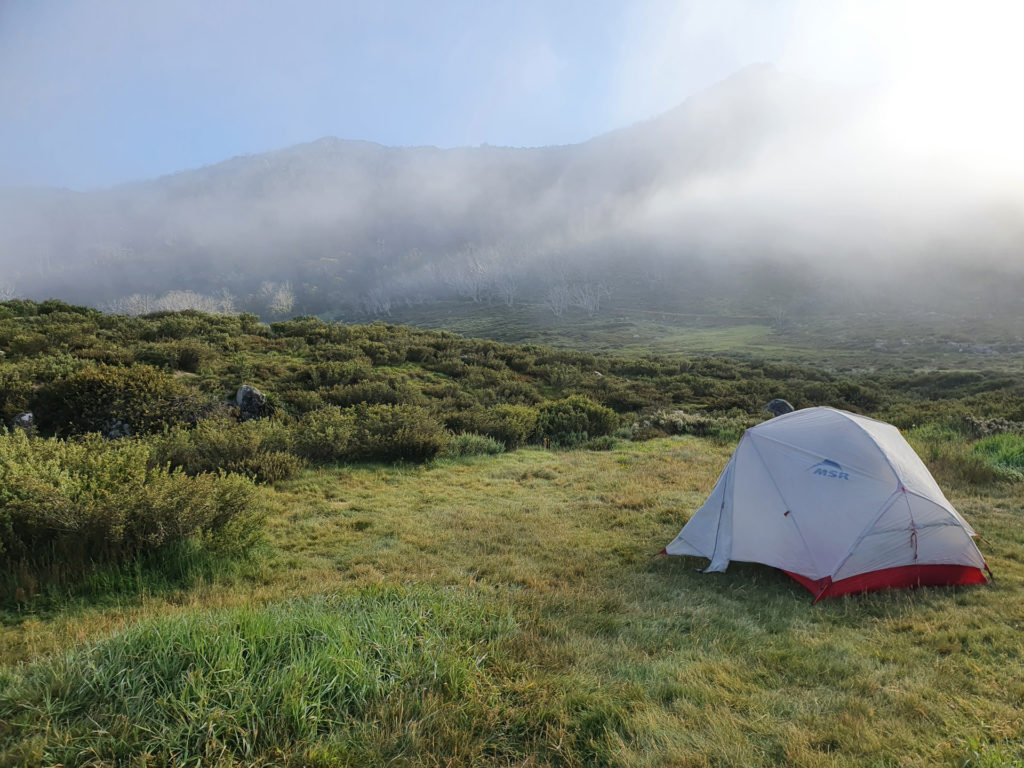It’s the new year and that can only mean one thing – a time for new year’s resolutions, goal-setting and bucket-list plans. And, if you’re anything like me, your New Year’s wish list will include plenty of adventurous activities.
A recent Christmas trip hiking, paddling and cycling in High Country Victoria (my first interstate trip in two years), got me thinking about my responsibilities in this new world.
As adventurers, we’ve always had the responsibility to look after the places we explore, but now it’s more important than ever to leave only footprints behind. Here’s some advice on how to be a more conscious adventurer during 2022 and beyond.

COVID safety runs deeper than you might think
With many people still reluctant to travel internationally due to the impact of COVID-19 (yep, the C-word. Sorry about that), more people than ever are embracing domestic tourism and heading outdoors to explore their home country’s natural wonders.
During COVID, countries across the world reported a rise in visitors to national parks and tents and other outdoor equipment even started to sell out.
On one hand, this increase in visitors is a good thing. The impact of the outdoors on mental wellbeing has been proven time and again (and if there’s ever a time people have needed mental health help, it’s now). Plus, the more people who explore the outdoors the more people will (hopefully) care about it, and become custodians who fight to protect it.
However, there are also negative sides to this increase in visitors. There has been a sharp rise in mountain rescues as people with limited experience take on challenges they’re ill-equipped for. In Madrid, Spain, there was a 27% increase in search and rescue call-outs, with a similar story in the UK and the US, where rescues increased by 30% in some parks. Alongside this, there have been consistent reports of people breaking local lockdown rules and COVID restrictions in a bid to get outdoors.

There’s also the increase in litter, human waste, and damage to trails and natural sites that are inevitable with over-tourism. Back in Scotland, some local councils were pleading for tourists to stay away – even after the restrictions were lifted. This was due to the drastic increase in human waste littering the pristine isle.
Now, with restrictions lifting there’s also an ongoing risk of COVID-19 being spread to the vulnerable, remote, and rural communities where many of the natural wonders we want to explore are located.
For example, in Australia, the Flying Doctors were on high alert and ready to help communities that don’t have the infrastructure to fight outbreaks.
So, even though travelling domestically and internationally is now easier, there are plenty of steps we should be taking to ensure we’re having a minimal impact:
Don’t attempt adventures without proper risk assessment, preparation and training.
How to adventure consciously during the pandemic:
- Always abide by local COVID rules such as mask-wearing and social distancing
- If you have any COVID symptoms at all, get tested and don’t travel until you have results and know what you’re dealing with
- Practice good hygiene – carry hand sanitiser, wipes etc
- If you’re camping in a campervan and not using established campsites, ensure you are self-sufficient for toileting. There are plenty of portable toilet options available for as little as AUD 50
- If you’re wilderness camping, carry out human waste where possible or dig a hole 30cm and at least 100ft from water sources
- Don’t attempt adventures without proper risk assessment, preparation and training. Healthcare workers and Search and Rescue have been stretched enough in the past two years – don’t put more pressure on the system by putting yourself at risk of injury

It might be time to rethink how you use social media
Social media such as Instagram, Tik Tok and Facebook are valuable tools for sharing adventures and inspiring others to follow in your footsteps.
I’ve seen people be more honest about an experience…
But social media can also have some downsides, including (once again) encouraging people to visit spots they might not have the skills to reach safely. Plus, all the damage we’ve mentioned above, is too often caused by over-tourism.
There are other issues too; such as the ongoing impact of social media on body image and confidence, and how the unrealistic portrayal of outdoor adventure fails to show the reality of what it takes (which is often blood, sweat, and tears).
I’ve definitely noticed my social feeds changing a little in the past two years. There seems to be a move towards more authentic social media content. I’ve seen people be more honest about an experience, rather than just sharing that epic ‘hero’ photo. I hope it’s something we see more of.

How to use social media for a force for good:
- Consider generic geotagging, where you tag a general location (such as the name of a national park) rather than a specific location. That way it can help manage over-tourism and minimise the risk of giving GPS coordinates of hard-to-reach locations to people who may not have the skills to reach it
- Why not share the full story? We can still share those perfect photos, but perhaps give more of an insight into the blood, sweat and tears that go into an adventure
- Privacy is so important; if you’re using a drone or capturing footage of people not in your crew make sure you have permission. Also, there are lots of rules around drones and shooting footage in national parks so give it a check first
Leave No Trace released its Social Media Guidance back in 2018 and it’s still relevant today. You can read it here
Make better choices for the environment
With climate change a constant threat, we all hold a responsibility to make better decisions for the environment where possible and to lead by example. Here are a few ideas:
- Switch from plastic zip lock bags for food and use small dry bags or reusable bags instead
- Clothing and consumer goods create some of the biggest carbon footprints of any industry. Play your part and repair your gear rather than buying new. From re-waterproofing your jackets and boots to stitching up the hole in your old backpack, you’ll be surprised at how many more years of use your gear has in it (caveat: never put yourself at risk using broken gear – sometimes it is time for a replacement, just make sure you recycle where possible)
- Solar-powered head torches and charging packs can cut down on batteries
- Cut your carbon and travel local where you can, or consider car-sharing or public transport (or even better, why not try bikepacking)?
- Step up your outdoor hygiene practices in the interest of protecting our unique biodiversity (whether that’s close to home or abroad). Remember to clean, and keep clean, your camping equipment, sports equipment, and travel gear – especially tent pegs and boots, bikes and vehicles that can transport pathogens and seeds. Remember, clothing and other equipment may also transport seeds and invasives such as Myrtle rust.
This list is far from extensive but shows there are myriad easy, everyday decisions you can make during an adventure to have less environmental impact. You can also find some extra tips for sustainable solo adventures in our sustainable tourism article.







